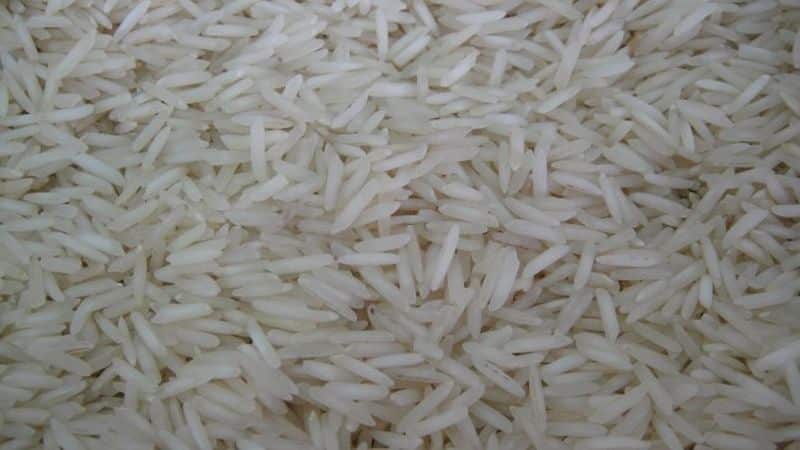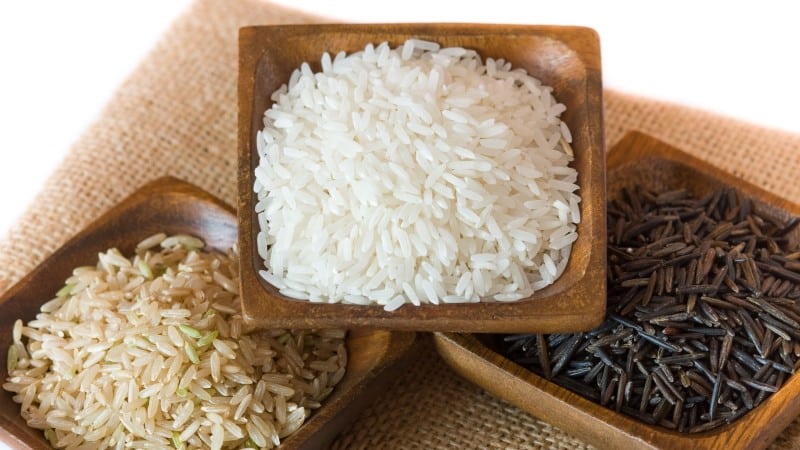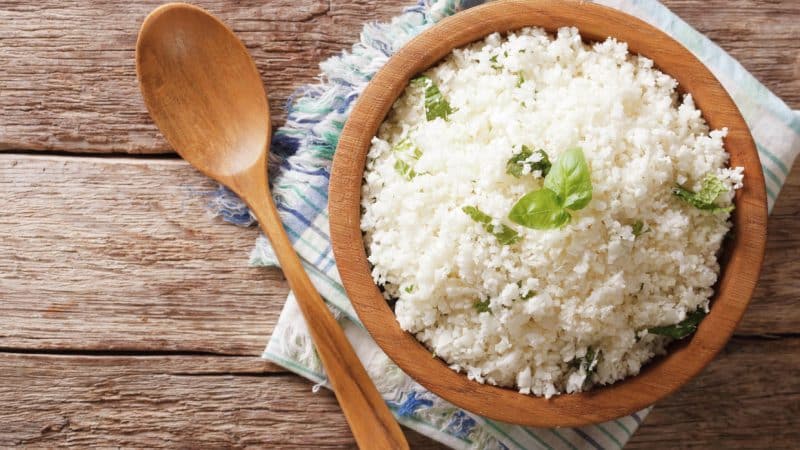What is long grain rice called - popular varieties and their uses
There are about 10,000 species of rice in the world, which are divided into two main subspecies, Oryza sativa indica and Oryza sativa japonica, where the former is long grain and the latter is short grain. Indica gets its name from the thin, oblong shape of the beans. This is the most popular rice for preparing side dishes; it is divided into several varieties, each of which has its own characteristics.
What is rice and where did it originate?
Rice, a plant from the cereal family, appeared in Southeast Asia even before our era and not only retained its popularity to this day, but also increased it. Rice began to be grown as a domestic crop 9 thousand years ago - both varieties of the plant were already cultivated then. After 2 thousand years, rice began to be cultivated as a food crop.

He reached Russia through Hungary in the 15th century AD. Initially called “Saracen grain”, later it was renamed “Saracen millet”. In Russian culture, the popularity of rice is explained by cultural and historical relationships with the countries of the Middle and Far East. Slavic cuisine has been replenished with the national Uzbek and Kazakh dish - pilaf.
Reference. In Russia, rice is grown in the Kuban, North Caucasus, Lower Volga region and Primorsky Territory using seedlings and in open ground in artificially created swamps, in lowlands, and in fields flooded with water.
Popular types of rice, chemical composition and calorie content
Rice is the oldest of grains, the most popular on all continents.
There are more than 23 varieties of cereal in the world. They differ from each other in the shape and color of the grain, and the processing method. Each type has its own taste, composition, calorie content, cooking method. Unhulled (unprocessed) grain has a brownish shell and arrives on store shelves after removing the husk.
There are 3 types of rice according to length:
- Long grain. It is sometimes called "long grain" rice or "long grain". This rice is distinguished by an oblong, thin grain shape with a length of 8 mm. Transparent, white or brown. When cooked, it absorbs a moderate amount of liquid, turns out crumbly, and does not become overcooked. Transparent and long grains are considered the highest quality and healthiest.
- Medium grain. Compared to long grain, it contains less starch, the grains are more rounded, 6 mm long, white or brown. During cooking, they require more water, after cooking they stick together a little, so they do not finish cooking it. Used to prepare risotto, soups, cereals, paella. In salads it can absorb the taste of other ingredients.
- Round grain. It is distinguished by a rounded grain shape, 5 mm long, matte white color. During heat treatment, it absorbs a lot of water, due to the large amount of starch in the composition, it sticks together, boils heavily, turning into a cream. Recommended for making milk porridges, puddings, casseroles, pies, soups, sushi and a variety of desserts.

Depending on the processing method, cereal is also divided into several types:
- Brown (unpolished). After minimal processing, the shell containing vitamins, fiber and other useful elements is preserved. This explains the benefits of unhulled rice.The cooking time is 25-35 minutes - the grain retains its shape and does not stick together. The only drawback of brown rice is its short shelf life.
- White (polished). Deep grinding deprives the grain of nutrients contained in the shell, so the starch content exceeds the amount of vitamins. This grain takes 15 minutes to cook and has a longer shelf life than brown grain.
- Steamed. The translucent appearance of the grain is obtained by processing using a special technology - the washed grain is soaked in hot water, treated with steam and dried. This technology allows you to save a certain amount of useful properties contained in the shell. Cooks for about 25 minutes, does not become overcooked or stick together.
100 g of cereal contains the following components:
- carbohydrates - 63.1 g;
- fats - 2 g;
- proteins - 7.3 g;
- water - 14 g;
- B vitamins - 0.5-35 mg;
- vitamin E - 1 mg;
- vitamin H - 12 mg;
- vitamin PP - 3.8 mg;
100 g of rice contains 55.2 g of starch and 9 g of dietary fiber. Rice contains minerals - magnesium, potassium, calcium, iodine, iron.
Calorie content depends on the type and is 330-363 kcal.
Benefits and harms for the human body
The amino acids included in the composition are involved in the structure of muscle tissue and promote weight loss. A rice-based diet improves metabolism, removes toxins and waste from the body, and helps to lose excess weight.
Useful properties of rice:
- has a beneficial effect on the cardiovascular system;
- improves brain function;
- cleanses the body of toxins and salts;
- relieves swelling;
- helps with stomach diseases - gastritis, ulcers, high acidity;
- porridge made from rice flour is allowed for children from 6 months due to its hypoallergenicity;
- Flour is used in cosmetology to relieve inflammation, fight acne and make the skin matte.
In some Asian countries, absorbent properties are used in the manufacture of medicines and dietary nutrition systems that help fight diseases of the gastrointestinal tract, osteochondrosis, bronchitis, and asthma.
Rice lowers blood cholesterol levels and reduces the risk of diabetes. Rice flour helps fight skin diseases, swelling, and other skin defects.
Reference. A large amount of potassium helps regulate water-salt metabolism in the body.

Despite the many beneficial properties, rice can cause harm to the body:
- excessive consumption leads to diabetes, heart disease, obesity, vitamin deficiency;
- frequent use threatens constipation;
- long-term storage of cereals leads to loss of nutrients;
- Imported cereals are treated against pests during transportation; to improve their appearance, the grain is polished with a composition containing glucose and talc - these substances are harmful to health.
What are the advantages and features of long grain rice?
Long grain rice differs from short grain rice not only in the shape of the grains, but also in the amount of starch. Its low content makes elongated rice more healthy and tasty; during cooking, the grains do not stick together or become overcooked, maintaining their original shape.
Attention! Useful qualities are concentrated in the elements found in the upper layers of grains. The deeper the grinding, the less goodness remains in the rice.
White rice is the most popular for everyday cooking. Colored varieties with an impressive range of beneficial properties are preferred by adherents of a healthy diet.
Dark varieties of long grain rice are rich in fiber, are successfully used in a gluten-free diet, help reduce body weight and improve digestion. Containing magnesium, dark cereal normalizes blood pressure and improves the functioning of the cardiovascular system. Normalizes stomach function, eliminates heartburn and nausea.
What varieties of long rice are there and what are they called?
For a tasty and healthy lunch, the type of rice is chosen in accordance with the recipe and personal preferences.
Basmati or Thai
Long thin grains of yellow color with a pronounced nutty aroma. To get rid of excess starch and achieve crispness, rice is thoroughly washed before cooking. Cook using the standard method in a 1:2 ratio with water, without stirring during cooking so that the grain does not stick together. The calorie content of basmati is 322 kcal per 100 g.
Jasmine
The grains are white in color with a pronounced jasmine scent, which is unusual for this grain. Before cooking, rinse well and cook in a ratio of 1:1.5 over low heat until it is steamed. Used for preparing spicy dishes and desserts, salads and side dishes for aromatic dishes. Calorie content of jasmine is 332 kcal per 100 g.
Wild, or Canadian
Thin, hard brown grains. It has a sweetish taste and nutty smell, and ranks first in vitamin content. Before cooking, rice is soaked for 10-12 hours and cooked in a 1:3 ratio with water for 40 minutes. Calorie content of Canadian rice is 347 kcal per 100 g.
The balanced content of vitamins, minerals, protein and fiber explains the high cost of the variety compared to others.
Black, or Tibetan

Absolutely solid grains black color with the smell of popcorn. It contains slightly less vitamins than the Canadian one.It sheds during heat treatment, so using enamel cookware is not recommended. Before cooking, it requires soaking for 3 hours, cooks for half an hour. You need twice as much water as cereal.
Looks beautiful when preparing rolls and sushi, as well as in salads.
Devzira
Red long-grain cereal from Fergana. The weight is different from other varieties - Devzira grain is heavier. To prepare, soak overnight: for 1 glass of cereal, five glasses of water are required. The peculiarity of grains is their ability to absorb not only water, but also fat, odors, and also increase in size 7 times when cooked. The calorie content of devzira is 365 kcal per 100 g.
Shala
Rice in a shell. A product with a balanced content of starch, sodium, potassium, iron, and all B vitamins. In the countries of Central Asia, shala is included in the diet for seriously ill people; ordinary people use it to maintain health. Before cooking, the rice is steamed, as the shell is hard. The decoction obtained during cooking is used as a medicine, it is filtered and given to patients.
What is long grain rice used for?

Long grain rice is a relatively inexpensive and versatile food product. The main quality is hardness, which makes it ideal for preparing side dishes, salads, stews, appetizers, and soups. Recently, with the advent of multicookers, steamers and other “smart” household kitchen appliances, cooking pilaf and porridge has become even easier.
Rice porridge flavored with fruit, or a side dish for vegetables, meat, fish - daily dishes in Japan, China, India, Indonesia.
Rice flour is gluten free makes it possible to use it in the production of infant formula and cereals, canned fish and meat, sausages, sausages, and minced meat.Suitable for allergy sufferers who require dietary nutrition. It is a natural thickener for sauces, mayonnaise, and condensed milk. By mixing rice flour with wheat flour, you get high-quality pasta with a stronger consistency.
Uzbeks, Tajiks and Tatars prepare pilaf from white long-grain rice, Italians - risotto, Spaniards - paella, Slavs - cabbage rolls, meatballs, salads. The list of dishes is huge: porridge, casseroles, puddings, various snacks, desserts.
Conclusion
Rice grains of different colors, smells and tastes are good in their own way and deserve to be tried. Each variety of rice has a number of advantages that distinguish it from the rest. Knowing the characteristics of each type will help you decide on the choice of rice for preparing a dish - be it pilaf or Spanish paella.